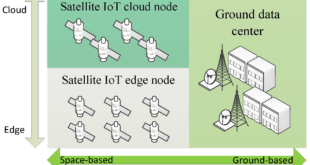Earthquakes are one of the most devastating natural disasters that occur across the globe. They can strike without warning and cause immense damage to life and property. According to the United States Geological Survey (USGS), there are about 20,000 earthquakes annually, and around 16 of them are of magnitude 7 …
Read More »Smart Ring Technology: A Revolution on Your Fingertips
Introduction: In the fast-paced world of wearable technology, smart rings have emerged as compact, versatile devices that seamlessly integrate into our daily lives. These sleek accessories, worn on a finger like a traditional ring, pack a punch of functionality, offering features such as mobile payments, access control, health tracking, and …
Read More »China’s AGI Pursuit: Evidence and Implications
Introduction: China is actively pushing forward with research into artificial general intelligence (AGI), an advanced form of AI that surpasses specific tasks and potentially poses profound global implications. In contrast to conventional narrow AI, which excels in specific applications, AGI has the potential to outperform humans across a wide range …
Read More »The Future of Data Processing: How Satellite-Based Cloud Computing is Revolutionizing Edge Computing
Introduction: The New Frontier of Data Processing In our increasingly data-driven world, traditional computing infrastructure is being pushed to its limits. As organizations across sectors demand faster processing and real-time analytics—especially for remote and data-intensive applications—a revolutionary solution is emerging from an unexpected direction: space. Satellite-based cloud computing represents a …
Read More »Harnessing the Power of GPUs for Quantum Computing: A Quantum Leap
Quantum computing is a groundbreaking field with the potential to revolutionize various industries, from cryptography to materials science. However, the development of quantum hardware is still in its early stages, leaving a gap between the potential of quantum algorithms and the means to run them efficiently. But there’s a hero …
Read More »Artificial Intelligence (AI) to Enhance Military Intelligence: A New Frontier in Defense Technology
In the rapidly evolving landscape of defense technology, artificial intelligence (AI) is emerging as a game-changer in the realm of military intelligence. The utilization of AI in the military domain is not a new concept, but recent advancements have propelled it to new heights, enabling armed forces to make more …
Read More »AI-Powered Human-Machine Teams: The Revolutionary Shift Transforming Modern Warfare
Warfare has been evolving throughout history, adapting to the technological advancements of each era. The future of warfare, however, is set to be transformed by an unprecedented force: Artificial Intelligence (AI). AI-driven human-machine teams are poised to reshape the very nature of conflict. These teams, consisting of humans collaborating with …
Read More »DARPA’s SafeDocs Initiative: Revolutionizing Cybersecurity for Electronic Data Formats
Introduction: In an era dominated by digital interactions and data-driven operations, safeguarding electronic documents has become a critical facet of national security and individual privacy. The Defense Advanced Research Projects Agency (DARPA) recognizes the critical need for secure electronic data processing and has launched the Safe Documents (SafeDocs) initiative. Through …
Read More »Precryption Technology by Gigamon: Illuminating Encrypted Threats Across Hybrid Cloud Infrastructure
In the ever-evolving landscape of cybersecurity, one prevailing truth remains: you can’t secure what you can’t see. The rise of hybrid cloud environments has introduced a new set of challenges, with one significant concern being the exploitation of hidden vulnerabilities. Gigamon, a leader in network visibility and security solutions, recognizes …
Read More »Revolutionizing Synthetic Biology: AI’s Transformative Impact on Accuracy, Speed, and Cost
In the realm of scientific discovery and technological advancement, the intersection of artificial intelligence (AI) and synthetic biology is forging a path toward unprecedented possibilities. As these two fields converge, AI is proving to be a catalyst, accelerating progress in synthetic biology by enhancing accuracy, speed, and cost-effectiveness. Understanding Synthetic …
Read More » International Defense Security & Technology Your trusted Source for News, Research and Analysis
International Defense Security & Technology Your trusted Source for News, Research and Analysis



